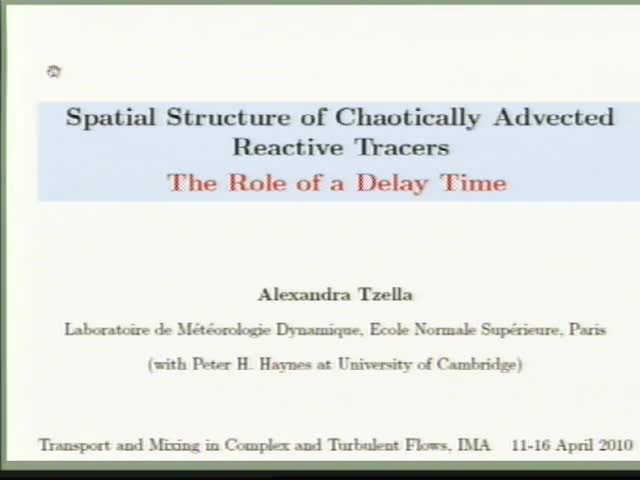Spatial structures of chaotically advected reactive tracers: The role of a delay time
Presenter
April 15, 2010
Keywords:
- Structure functions
MSC:
- 11N45
Abstract
Keywords: reactive flows, chaos, structure functions, Holder exponents, delay differential equations, Lyapunov exponents
Abstract: Motivated by the spatial heterogeneity observed in plankton distributions in the meso-scale ocean, we examine the stationary-state spatial structure of reacting tracer fields, for the case for which the reaction equations contain delay terms. The fields are advected by a flow that gives rise to chaotic parcel trajectories and the structures are maintained by a large-scale source. Previous theoretical investigations have shown that, in the absence of delay terms and in a regime where diffusion can be neglected (large Peclet number), the structures are filamental and characterized by a single scaling regime with a Holder exponent that depends on the rate of convergence of the reactive processes and the strength of the stirring measured by the average stretching rate (Lyapunov exponent). In the presence of delay terms, we show that for sufficiently small scales all interacting fields should share the same spatial structure, as found in the absence of delay terms. However, depending on the strength of the stirring and the magnitude of the delay time, two further scaling regimes that are unique to the delay system may appear at intermediate length-scales. An expression for the transition length-scale dividing small-scale and intermediate-scale regimes is obtained and the scaling behavior of the tracer field is explained. Finally, we discuss the dependence of the field's scaling exponents on the distribution of the stretching statistics.
Joint work with P. H. Haynes.
